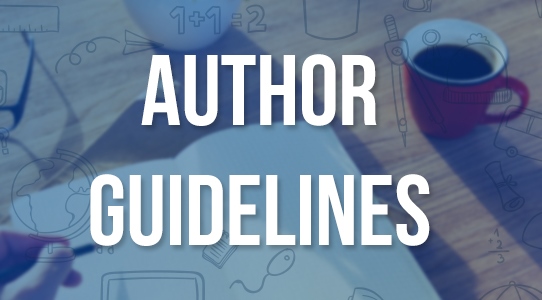Breaking Through Binarities: Islamic Education in the Vortex of Gender, Sexuality, and Human Rights
DOI:
https://doi.org/10.37680/qalamuna.v17i2.7586Keywords:
Gender binary, ,Islamic religious education, sexuality, human rightsAbstract
The issue of gender binary, sexuality, and human rights in Islamic education discourse in Indonesia is an area that is often neglected but crucial for the relevance of religious education in the contemporary era. Aiming to analyze the understanding of PAI teachers, school principals, and students regarding these issues and how PAI reflects or responds to them, this study identifies challenges and opportunities in integrating non-binary perspectives. Using a qualitative approach with a multiple case study design at SMAN 1 and SMAN 2 in Ciamis District, data were collected through in-depth interviews with four PAI teachers, two school principals, and several students, supplemented by document analysis. The research indicates that the majority of PAI teachers and school leaders also retain a binary understanding of gender and sexuality. Many of these teachers also report feeling inadequately prepared or unable to know where to start when it comes to teaching these issues. Although there is a general commitment to human rights, its implementation in these sensitive issues remains limited. On the other hand, students demonstrate ambiguity, accepting the binary narrative of PAI while also being exposed to diversity from other sources, creating a gap between formal teachings and their lived realities. As a result, PAI risks losing relevance and creating an environment that is less inclusive if it does not adapt to broader socio-cultural realities. This requires curriculum development, teacher training, and more progressive school policies to foster a more comprehensive understanding of religion, humanity, and diversity.
Downloads
References
Al-Attas, S. M. N. (1999). The Concept of Education in Islam: A Framework for An Islamic Philosophy of Education. International Institute of Islamic Thought and Civilization (ISTAC.
Alfaizinun, C. N., & Lilawati, E. (2023). Penerapan Pembelajaran Pendidikan Agama Islam Berbasis Higher Order Thinking Skill (HOTS) di SMA Negeri Jogoroto. Islamika, 5(4), 1551–1565. https://doi.org/10.36088/islamika.v5i4.3877
Azzahra, A., Shadrina, S., Wardana, G. A., Yandrizal, D., & Hasim, R. (2021). Islamic Education and Concept of Gender Using a Culture Approach in Minangkabau. Khalifa: Journal of Islamic Education, 5(2), 155. https://doi.org/10.24036/kjie.v5i2.129
Blechner, M. J. (2015). Bigenderism and Bisexuality. Contemporary Psychoanalysis, 51(3), 503–522. https://doi.org/10.1080/00107530.2015.1060406
Darwin, H. (2020). Navigating the Religious Gender Binary. Sociology of Religion, 81(2), 185–205. https://doi.org/10.1093/socrel/srz034
Dubois, M. (2025). Gender, Sexuality, and the Body. In M. Dubois (Ed.), Gerard Manley Hopkins in Context (pp. 183–216). Cambridge University Press. https://www.cambridge.org/core/product/1099DE43337D2DA7A8A982569CD9A254
Forcinito, A. (2022). Gender and Sexuality. In T. Perchard, S. Graham, T. Rutherford-Johnson, & H. Rogers (Eds.), Twentieth-Century Music in the West: An Introduction (pp. 321–340). Cambridge University Press. https://doi.org/DOI: 10.1017/9781108680899.014
Francis, B. (2006). The Nature of Gender. In The Sage Handbook of Gender and Education (pp. 7–17). Sage London. https://us.sagepub.com/en-us/nam/the-sage-handbook-of-gender-and-education/book227393
Gaydarska, B., Rebay-Salisbury, K., Ramírez Valiente, P., Fries, J. E., Hofmann, D., Augereau, A., Chapman, J., Mina, M., Pape, E., Ialongo, N., Nordholz, D., Bickle, P., Haughton, M., Robb, J., & Harris, O. (2023). To Gender or not To Gender? Exploring Gender Variations through Time and Space. European Journal of Archaeology, 26(3), 271–298. https://doi.org/DOI: 10.1017/eaa.2022.51
Germain, S., & Yong, A. (2023). Gender. In S. Germain & A. Yong (Eds.), Beyond the Virus: Multidisciplinary and International Perspectives on Inequalities Raised by COVID-19 (pp. 77–78). Bristol University Press. https://www.cambridge.org/core/product/0675C08E996CCF5C007D93B5E05BF4B8
Gregoratto, F. (2017). The Critical Nature of Gender: A Deweyan Approach to the Sex/Gender Distinction. Journal of Speculative Philosophy, 31(2), 273–285.
Herbert, J. (2021). Philosophy of Education: A Critical Perspective. Pelgrave.
Husni, H., Rizal, S., Munandar, D., & Selamet, S. (2024). Teachers and Multicultural Education: How do Moderate Islamic Teachers Perceive Freedom of Expression and Hate Speech? Dinamika Ilmu, 24(1), 61–75. https://doi.org/10.21093/di.v24i1.8099
Julaeha, S. (2019). Problematika Kurikulum dan Pembelajaran Pendidikan Karakter. Jurnal Penelitian Pendidikan Islam, 7(2), 157. https://doi.org/10.36667/jppi.v7i2.367
Ketola, M., Selander, S., & Ruvio, A. (2022). Identity Expressions of Agender Individuals in a Digital World. In The Routledge Handbook of Digital Consumption (pp. 425–435). Routledge.
Kismödi, E., Esther, C., Eleanor, M.-T., Eusebio, R.-A., & Coleman, E. (2017). Sexual Rights as Human Rights: A Guide for the WAS Declaration of Sexual Rights. International Journal of Sexual Health, 29(1), 1–92. https://doi.org/10.1080/19317611.2017.1353865
Kull, A. (2012). Gender Awareness in Islamic Education: The Pioneering Case of Indonesia in a Comparison with Pakistan. Studia Islamika, 19(3). https://doi.org/0.15408/sdi.v19i3.354
Marley, J. (2025). Gender and Sexuality. In J. Moran (Ed.), Sean O’Casey in Context (pp. 110–119). Cambridge University Press. https://doi.org/DOI: 10.1017/9781009304191.011
Mayer, A. E. (2018). Islam and Human Rights: Tradition and Politics. Routledge.
Morrison, T., Dinno, A., & Salmon, T. (2021). The Erasure of Intersex, Transgender, Nonbinary, and Agender Experiences Through Misuse of Sex and Gender in Health Research. American Journal of Epidemiology, 190(12), 2712–2717. https://doi.org/10.1093/aje/kwab221
Muttaqin, F. (2008). Progressive Muslim Feminists in Indonesia from Pioneering to the Next Agendas. Ohio University.
Narasimhan, V. L., Bhargavi, G. V., & IEEE. (2019). The Changing Nature of Disciplinary Genders - A Position Paper. 11th International Conference on Advanced Computing (ICoAC), 11, 41–47. https://doi.org/10.1109/ICoAC48765.2019.247123
Nightingale, A. (2006). The Nature of Gender: Work, Gender, and Environment. Environment and Planning D: Society and Space, 24(2), 165–185. https://doi.org/10.1068/d01k
Nissen, A. (2023). Gender-Transformative Remedies for Women Human Rights Defenders. Business and Human Rights Journal, 8(3), 369–402. https://doi.org/DOI: 10.1017/bhj.2023.41
Novianti, H. (2019). Konsep Kurikulum Terpadu Perspektif Pendidikan Islam. Jurnal Penelitian Pendidikan Islam, 7(2), 127. https://doi.org/10.36667/jppi.v7i2.364
Nyhagen, L. (2021). Oppression or Liberation? Moving beyond Binaries in Religion and Gender Studies. The Routledge handbook of religion, gender and society (pp. 52–66). Routledge.
O’Shaughnessy, D. (2023). Gender. In D. O’Shaughnessy (Ed.), The Censorship of Eighteenth-Century Theatre: Playhouses and Prohibition, 1737–1843 (pp. 31–92). Cambridge University Press. https://doi.org/DOI: 10.1017/9781108866576.002
Platt, M., Sharyn Graham, D., & Bennett, L. R. (2018). Contestations of Gender, Sexuality and Morality in Contemporary Indonesia. Asian Studies Review, 42(1), 1–15. https://doi.org/10.1080/10357823.2017.1409698
Pulice-Farrow, L., Sebastian B., M., & Galupo, M. P. (2020). “Bigender is Just a Tumblr Thing”: Microaggressions in the Romantic Relationships of Gender Non-conforming and Agender Transgender Individuals. Sexual and Relationship Therapy, 35(3), 362–381. https://doi.org/10.1080/14681994.2018.1533245
Reinterpreting Gender in the Qur’an: Realizing Inclusive Interpretation in the Modern Era. (2024). An-Nisa Journal of Gender Studies, 17(2 SE-Articles), 117–132. https://doi.org/10.35719/annisa.v17i2.303
Richards, C., Bouman, W. P., Seal, L., Barker, M. J., Nieder, T. O., & T’Sjoen, G. (2016). Non-Binary or Genderqueer Genders. International Review of Psychiatry, 28(1), 95–102. https://doi.org/10.3109/09540261.2015.1106446
Rizal, A. S. (2014). Filsafat Pendidikan Islami. Jurnal Pendidikan Agama Islam-Ta’lim, 12(1), 1–18.
Robinson, M. (2020). Two-Spirit Identity in a Time of Gender Fluidity. Journal of Homosexuality, 67(12), 1675–1690. https://doi.org/10.1080/00918369.2019.1613853
Rollo-Koster, J., Ventresca, R. A., Eichbauer, M. H., & Pattenden, M. (2025). Women, Gender, Sexuality. In J. Rollo-Koster, R. A. Ventresca, M. H. Eichbauer, & M. Pattenden (Eds.), The Cambridge History of the Papacy: Volume 3: Civil Society (Vol. 3, pp. 219–400). Cambridge University Press. https://doi.org/DOI: 10.1017/9781108662994.009
Salinas-Quiroz, F., & Sweder, N. (2023). Authentic Gender Development in Non-binary Children. Frontiers in Sociology, 8(1), 95–102. https://doi.org/10.3389/fsoc.2023.1177766
Sumerau, J. E., Mathers, L. A. B., & Moon, D. (2020). Foreclosing Fluidity at the Intersection of Gender and Sexual Normativities. Symbolic Interaction, 43(2), 205–234. https://doi.org/10.1002/symb.431
Van Wichelen, S. (2010). Religion, Politics and Gender in Indonesia: Disputing the Muslim Body. Routledge.
Wadud, A. (2004). Qur’ān, Gender and Interpretive Possibilities. Hawwa, 2(3), 316–336. https://doi.org/10.1163/1569208043077297
Walton, M. T., Lykins, A. D., & Bhullar, N. (2016). Beyond Heterosexual, Bisexual, and Homosexual: A Diversity in Sexual Identity Expression. Archives of Sexual Behavior, 45(7), 1591–1597. https://doi.org/10.1007/s10508-016-0778-3
Xu, Y., Ma, Y., & Rahman, Q. (2023). Comparing Asexual with Heterosexual, Bisexual, and Gay/Lesbian Individuals in Common Mental Health Problems: A Multivariate Meta-analysis. Clinical Psychology Review, 105, 102334. https://doi.org/10.1016/j.cpr.2023.102334
Downloads
Published
How to Cite
Issue
Section
License
Copyright (c) 2025 Husni Husni, Walter Hayden, Didih Syakir Munandar, Muhamad Aris Munawar

This work is licensed under a Creative Commons Attribution-ShareAlike 4.0 International License.
Authors who submit manuscript retain its copyright and grant publisher right of first publication licensed under a Creative Commons Attribution-ShareAlike 4.0 International License (CC BY-SA 4.0) that allows others to access (search, read, download, and cite), share (copy and redistribute the material in any medium or format) and adapt (remix, transform, and build upon any material) the work for any lawful purpose, even commercially with an acknowledgement of the work's authorship and initial publication in Qalamuna: Jurnal Pendidikan, Sosial, dan Agama.












